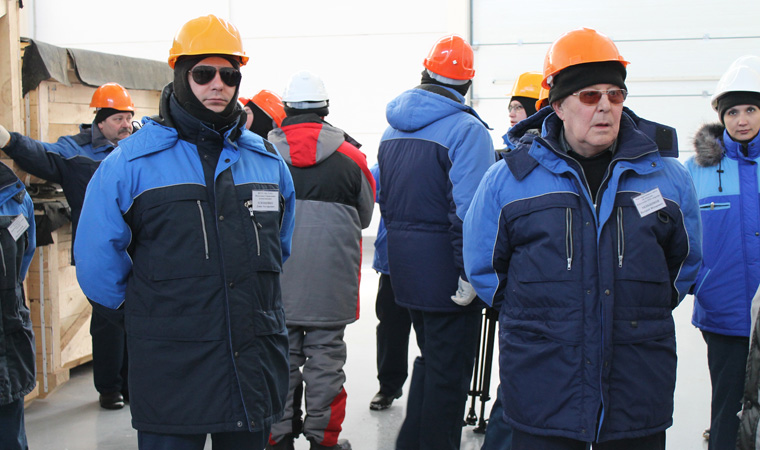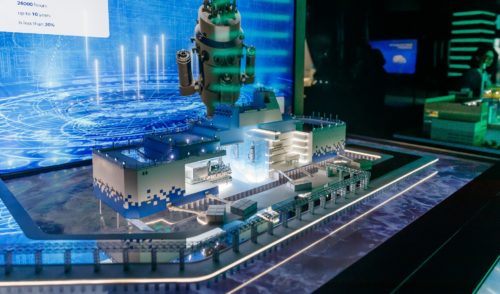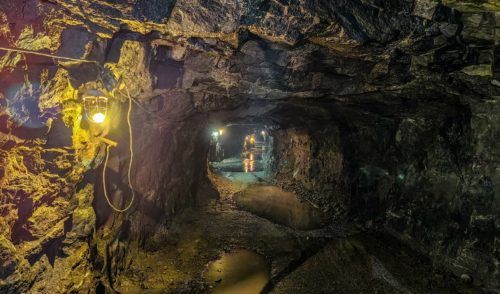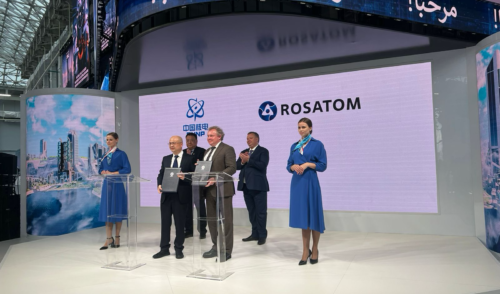
Nothing to hide
back to contentsThey put things right there all outdoors: the project has been joined by France, Germany, Japan, Italy, the USA, Canada, the United Kingdom, Finland, Denmark, the Netherlands, Sweden, Norway as well as the European Commission and the European Bank for Reconstruction and Development (EBRD). They have built several facilities, repaired the access road, and purchased equipment. Liquid and solid radwaste was securely isolated in special rooms. All these cost about RUB 3.5 Billion.
“It is not the first time when international ecologists come here, Valery Panteleev, acting director of SevRAO, a ROSATOM’s branch for radioactive waste management, explains. “This is problematic but feasible. But the Russian environmentalists, especially local, are frequent visitors. We have nothing to hide.”
The delegation of the ROSATOM’s Public Council and international experts were to see with their own eyes and realize what changes have taken place. The delegation was accompanied by SevRAO department director Alexander Krasnoshchekov. Answering a question on the company’s targets, he says: “Since 2000 the radiation situation has been brought to normal, 5,000 tons of SRW (solid radioactive waste) have been collected from the outdoor pads. The first SNF rail train was sent off. The target now is to prepare fuel and send it to PA Mayak (a ROSATOM’s company for isotope production, storage and recycling of SNF), to ship LRW (liquid radioactive waste) and SRW to Saida Bay for reprocessing, and then it is the environmental rehabilitation of the buildings and territory. These are the main targets.”
The dangerous safe zone
SNF is a heritage of the Soviet Union and the Cold War. Now,
some 17,000 m3 of SRW and about 1300 m3 of LRW have accumulated in the bay. In 2010 one rail train with SNF was sent to Saida Bay for storage, and two batches of SRW left the site in 2011 and 2013. The work will intensify when additional facilities are built in 2015 – 2016.
The delegation had a look at the containers, which will house radwaste to be shippped to the treatment place. They are manufactured here, at the facility built with the U.K.’s financial support. Now, there is a rack and rail trucks to be used to move trolleys with the containers. All pontoons were repaired but they still will be reinforced with 80-cm-thick rebar concrete, as prescribed by the safety standards. “In summer we will install a bridge crane, Krasnoshchekov explains. “And everything will be in place. Radwaste will be sent to the Serebryanka (a special tanker, which can hold 1,000 m3 of LRW); waste will go to Saida Bay, and SNF first will be shipped to Atomflot and then to PA Mayak. So this pier is our essential component.”
The third facility is the laboratory building, which has been completely refurbished and re-equipped. The fourth place is the radiation safety room, the domain of shift health physicists, radiation safety engineers and specialists. It also houses the individual exposure dose database of the SevRAO staff, contractors’ personnel and all visitors. But in summer, the radiation safety system will undergo revolutionary changes: it is planned to purchase GPS-fitted individual dosimeters to promptly locate a person if his/her readings are off the guidelines.
Building No. 6 houses LRW. Building No. 67 hosts about 3,000 SRW packages collected in all, speaking the bureaucratic language, unauthorized areas. There are two shelters – 201 and 202 – they were built in 2012 with the Italian money. One holds 850 and the other 1,050 temporary packages with SRW. When all SRW is removed from the surface, these packages will be opened, the waste will be sorted, fragmented, repacked and sent to Saida Bay for ultimate conditioning.
No bars for environmentalists
The European Bank for Reconstruction and Development invests large money in this international project. An EBRD representative Jane Smith-Briggs told that she had visited Andreeva Bay for the first time 11 years ago. Since then everything has changed for the better, she says. The main thing is that the politics will not interfere: we work in both Ukraine and Russia and if there are no sanctions imposed, we will proceed, Smith-Briggs continues, stating she is satisfied with the outcomes.
“There are no grounds for concerns about radiation safety issues, Sergey Baranovsky, an academician of the Russian Academy of Natural Sciences and vice chairman of ROSATOM’s Public Council, says, agreeing with the colleagues. “Bellona, which is financed from abroad, is here; I represent the Green Cross, which is an ecological organization funded by the western countries. There are representatives of the Environmental Review Center. We, ecologists, we understand that the environmental impact risks are minimal. But it has to be explained to everymen in both this country and abroad. Radiophobia exists everywhere in the world. The openness, which is being demonstrated by ROSATOM, is a move toward the civil society.”




